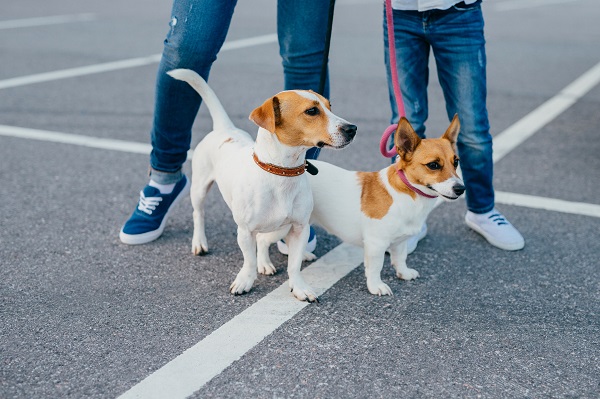Dog owners are so possessive of their beloved pets that it’s a nightmare to think about losing their faithful companion. They ensure the safety of their pets, whether indoors or outdoors, keeping a watchful eye on them, especially when moving outdoors. At home, too, they become anxious about not seeing their pet for some time and track it closely to ensure that the dog is safe.
With such emotional attachment to pets, it is natural for pet owners to shudder at the thought of dognapping, a phrase that describes the kidnapping of canines.
Remember that the threat of losing your dog looms large in the US, where two million cats and dogs are stolen every year.
According to the statistics made available by the American Kennel Club, there has been a sharp increase (31%) in dognapping incidents in recent years.
As it is impossible to prevent dogs from being stolen or becoming untraceable, pet owners should stay prepared to deal with the eventuality. They must keep their cool and work toward getting back their beloved pet.
Causes for dognappings
There are multiple reasons for dognappings, and dogs might change hands many times after being stolen, which diminishes the chances of recovering the canines. Making money by stealing dogs is the prime reason for dognapping, either by holding it for ransom or simply selling it off clandestinely.
A grey market for intact dogs attracts thieves as there is good demand from backyard breeders and puppy mills for dogs that aren’t neutered or sprayed. Depending on the type and breed of dogs, a chain of buyers and sellers is involved in the shady trade.
So, what should you do to get back your stolen dog?
Call the police
The moment you are sure that you have lost your dog, lose no time but call the police and inform your local animal control department.
Do not just report the incident to the police; to help them initiate an investigation, you must file a formal report to the police that becomes a legal document.
Should your case reach the courts, the police report becomes a critical document to prove your point about dognapping. However, be sure your dog is stolen before going to the police station.
Gather witnesses
Some audacious dog lifters might dare to run away with your dog while you are present at the spot and become a witness to the crime. While such incidences are not too many, in most cases, you have to search for people who have seen the incident and are willing to share detailed information about what happened.
Since witnesses are critical to establishing your case, you must go all out to gather witnesses, including CCTV footage or some private videos captured by people present at the scene of the crime when the incident happened.
Information gathered from the witnesses will help the police understand the situation and circumstances while identifying some suspects. Share some current and distinct photos of your dog with the police and distribute them within your known circle to expand the scope of the search.
Alert your neighbors and ask them for help with a request to share information about your dog that they might happen to know.
Use all available resources
Start a dog hunt on your own by using all resources at your disposal. Use social media channels extensively to circulate the pictures of your dog while briefly narrating the incident mentioning the place, date, and time of occurrence.
Reach out to online groups involved in local lost and found incidents. Request people to share the message urgently and develop a system of recording all information gathered from social media.
Take time to analyze the data to weed out the unhelpful ones so that you can focus on valuable information. Tying up loose ends should direct your investigation in the right direction.
You can even hang bright posters in your area carrying the photograph of your dog to spread the search net farther.
Get in touch with pet-friendly groups and organizations
Although you might be much disturbed mentally by losing your beloved dog, and uncertainty looms about the possibility of recovering it, you must muster courage and maintain a cool head.
Remember that your efforts in tracing the lost dog are critical to getting back your lost dog, and you must launch a diligent search.
Take help from every resource that comes to your mind, like the news media (print and digital), radio, and television, to expand and accelerate the pace of your search for your dog.
Contact helpful pet-friendly websites like akcreunite.org, aspca.org/pet-care/ general-pet-care/ASPCA-mobile-app, homeagain.com, and petfbi.org and seek their help to get back your dog.
These organizations have a nationwide network of rescues and animal shelters and can help you intensify the search through their channels.
Stay safe and protect yourself
Stolen dogs are often used for ransom and while scaling up your search efforts, be careful to protect your vulnerability from bad actors who might try to extract money from you in exchange for your dog. The Better Business Bureau warns pet owners to stay alert about scamsters who might be preying on them for money.
Even if someone claims to have your dog in custody and agrees to return it to you, carefully check the person’s authenticity. If the person’s claim is genuine, you should proceed to get back your dog with help from the police.

 DogExpress
DogExpress





















 in Chandigarh, India.
in Chandigarh, India. 
